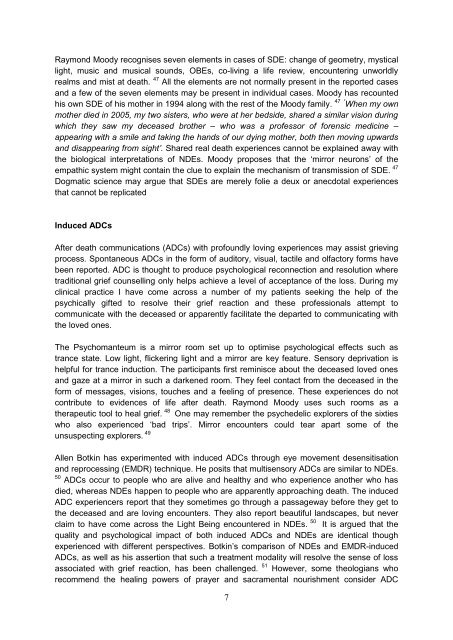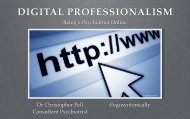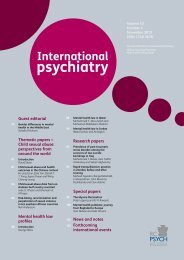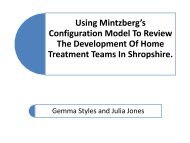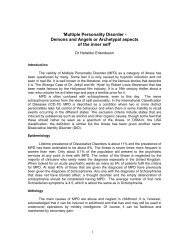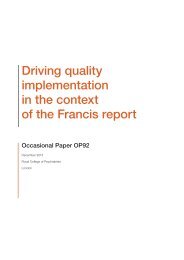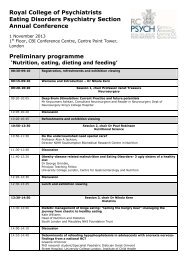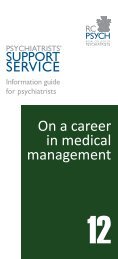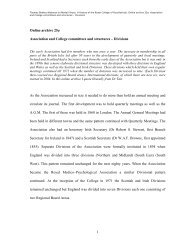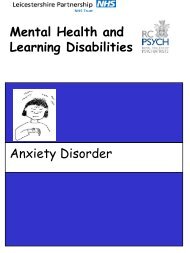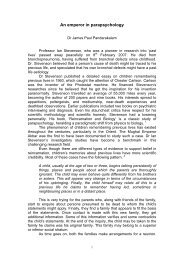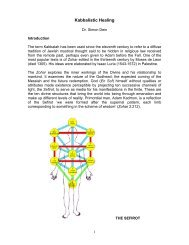A Search for the Truth of Near Death Experiences
A Search for the Truth of Near Death Experiences
A Search for the Truth of Near Death Experiences
You also want an ePaper? Increase the reach of your titles
YUMPU automatically turns print PDFs into web optimized ePapers that Google loves.
Raymond Moody recognises seven elements in cases <strong>of</strong> SDE: change <strong>of</strong> geometry, mystical<br />
light, music and musical sounds, OBEs, co-living a life review, encountering unworldly<br />
realms and mist at death. 47 All <strong>the</strong> elements are not normally present in <strong>the</strong> reported cases<br />
and a few <strong>of</strong> <strong>the</strong> seven elements may be present in individual cases. Moody has recounted<br />
his own SDE <strong>of</strong> his mo<strong>the</strong>r in 1994 along with <strong>the</strong> rest <strong>of</strong> <strong>the</strong> Moody family. 47 ‘ When my own<br />
mo<strong>the</strong>r died in 2005, my two sisters, who were at her bedside, shared a similar vision during<br />
which <strong>the</strong>y saw my deceased bro<strong>the</strong>r – who was a pr<strong>of</strong>essor <strong>of</strong> <strong>for</strong>ensic medicine –<br />
appearing with a smile and taking <strong>the</strong> hands <strong>of</strong> our dying mo<strong>the</strong>r, both <strong>the</strong>n moving upwards<br />
and disappearing from sight’. Shared real death experiences cannot be explained away with<br />
<strong>the</strong> biological interpretations <strong>of</strong> NDEs. Moody proposes that <strong>the</strong> ‘mirror neurons’ <strong>of</strong> <strong>the</strong><br />
empathic system might contain <strong>the</strong> clue to explain <strong>the</strong> mechanism <strong>of</strong> transmission <strong>of</strong> SDE. 47<br />
Dogmatic science may argue that SDEs are merely folie a deux or anecdotal experiences<br />
that cannot be replicated<br />
Induced ADCs<br />
After death communications (ADCs) with pr<strong>of</strong>oundly loving experiences may assist grieving<br />
process. Spontaneous ADCs in <strong>the</strong> <strong>for</strong>m <strong>of</strong> auditory, visual, tactile and olfactory <strong>for</strong>ms have<br />
been reported. ADC is thought to produce psychological reconnection and resolution where<br />
traditional grief counselling only helps achieve a level <strong>of</strong> acceptance <strong>of</strong> <strong>the</strong> loss. During my<br />
clinical practice I have come across a number <strong>of</strong> my patients seeking <strong>the</strong> help <strong>of</strong> <strong>the</strong><br />
psychically gifted to resolve <strong>the</strong>ir grief reaction and <strong>the</strong>se pr<strong>of</strong>essionals attempt to<br />
communicate with <strong>the</strong> deceased or apparently facilitate <strong>the</strong> departed to communicating with<br />
<strong>the</strong> loved ones.<br />
The Psychomanteum is a mirror room set up to optimise psychological effects such as<br />
trance state. Low light, flickering light and a mirror are key feature. Sensory deprivation is<br />
helpful <strong>for</strong> trance induction. The participants first reminisce about <strong>the</strong> deceased loved ones<br />
and gaze at a mirror in such a darkened room. They feel contact from <strong>the</strong> deceased in <strong>the</strong><br />
<strong>for</strong>m <strong>of</strong> messages, visions, touches and a feeling <strong>of</strong> presence. These experiences do not<br />
contribute to evidences <strong>of</strong> life after death. Raymond Moody uses such rooms as a<br />
<strong>the</strong>rapeutic tool to heal grief. 48 One may remember <strong>the</strong> psychedelic explorers <strong>of</strong> <strong>the</strong> sixties<br />
who also experienced ‘bad trips’. Mirror encounters could tear apart some <strong>of</strong> <strong>the</strong><br />
unsuspecting explorers. 49<br />
Allen Botkin has experimented with induced ADCs through eye movement desensitisation<br />
and reprocessing (EMDR) technique. He posits that multisensory ADCs are similar to NDEs.<br />
50 ADCs occur to people who are alive and healthy and who experience ano<strong>the</strong>r who has<br />
died, whereas NDEs happen to people who are apparently approaching death. The induced<br />
ADC experiencers report that <strong>the</strong>y sometimes go through a passageway be<strong>for</strong>e <strong>the</strong>y get to<br />
<strong>the</strong> deceased and are loving encounters. They also report beautiful landscapes, but never<br />
claim to have come across <strong>the</strong> Light Being encountered in NDEs. 50 It is argued that <strong>the</strong><br />
quality and psychological impact <strong>of</strong> both induced ADCs and NDEs are identical though<br />
experienced with different perspectives. Botkin’s comparison <strong>of</strong> NDEs and EMDR-induced<br />
ADCs, as well as his assertion that such a treatment modality will resolve <strong>the</strong> sense <strong>of</strong> loss<br />
associated with grief reaction, has been challenged. 51 However, some <strong>the</strong>ologians who<br />
recommend <strong>the</strong> healing powers <strong>of</strong> prayer and sacramental nourishment consider ADC<br />
7


